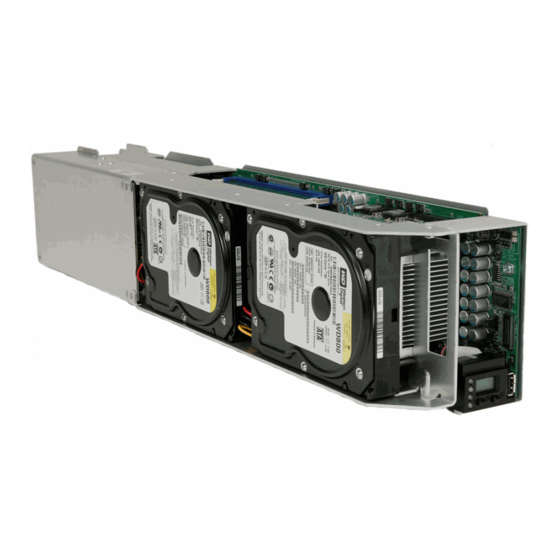ClearCube R4300 Site Preparation Manual - Page 5
Browse online or download pdf Site Preparation Manual for Extender ClearCube R4300. ClearCube R4300 9 pages. Version 53b12
Also for ClearCube R4300: Quick Start Manual (2 pages), Release Note (1 pages), Quick Start Manual (2 pages), Quick Start Manual (2 pages), Quick Start Manual (2 pages), Firmware Update Manual (3 pages)

behind the chassis. From the front of the chassis, a technician must be able to open the front
bezel and pull out all of the blades – this requires two feet of clearance (the length of each blade).
You will also need access to the network switch that is
connected to each chassis in the event the port settings must
be manually adjusted.
LOAD BEARING (WEIGHT) REQUIREMENTS
Made with strong sheet metal to protect the Blades and
modules, one fully loaded chassis weighs approximately 80
pounds. A fully loaded rack of 14 chassis and 112 Blades
will weigh approximately 1120 lbs, not including the weight of
the rack itself. The loading on the floor will be greater than
187 lbs. per square foot. Prior to installation, the customer
must verify that the floor will hold this considerable weight –
raised floors may need additional support under the racks.
Customers with smaller installations also must make sure
that their floor, table, or other furniture can handle the weight
of multiple chassis.
In addition to weight concerns, racks and chassis must be in
stable positions for proper installation. If the installation site
uses a 2-post rack, the chassis must be mounted on the rack
at each chassis' center of gravity. ClearCube recommends
using a 4-post rack or a cabinet with adjustable middle rails,
which will add stability by providing support at both ends of the chassis. ClearCube offers a
Chassis Rapid Mounting Kit for use with 4-post racks that can improve installations times by a
factor of five. Prior to chassis installation, the rack should be secured to both the ceiling and floor
to prevent tipping.
During the operational life of the chassis,
it
will
need
maintenance purposes from time to time.
This may entail opening a cabinet door or
other access point, and therefore more
space than the minimum footprint is
recommended.
must be able to access the rear of the
chassis to change cable connections or
replace chassis modules – this will
require at least eight inches of clearance
5
to
be
accessed
for
In any case, personnel
